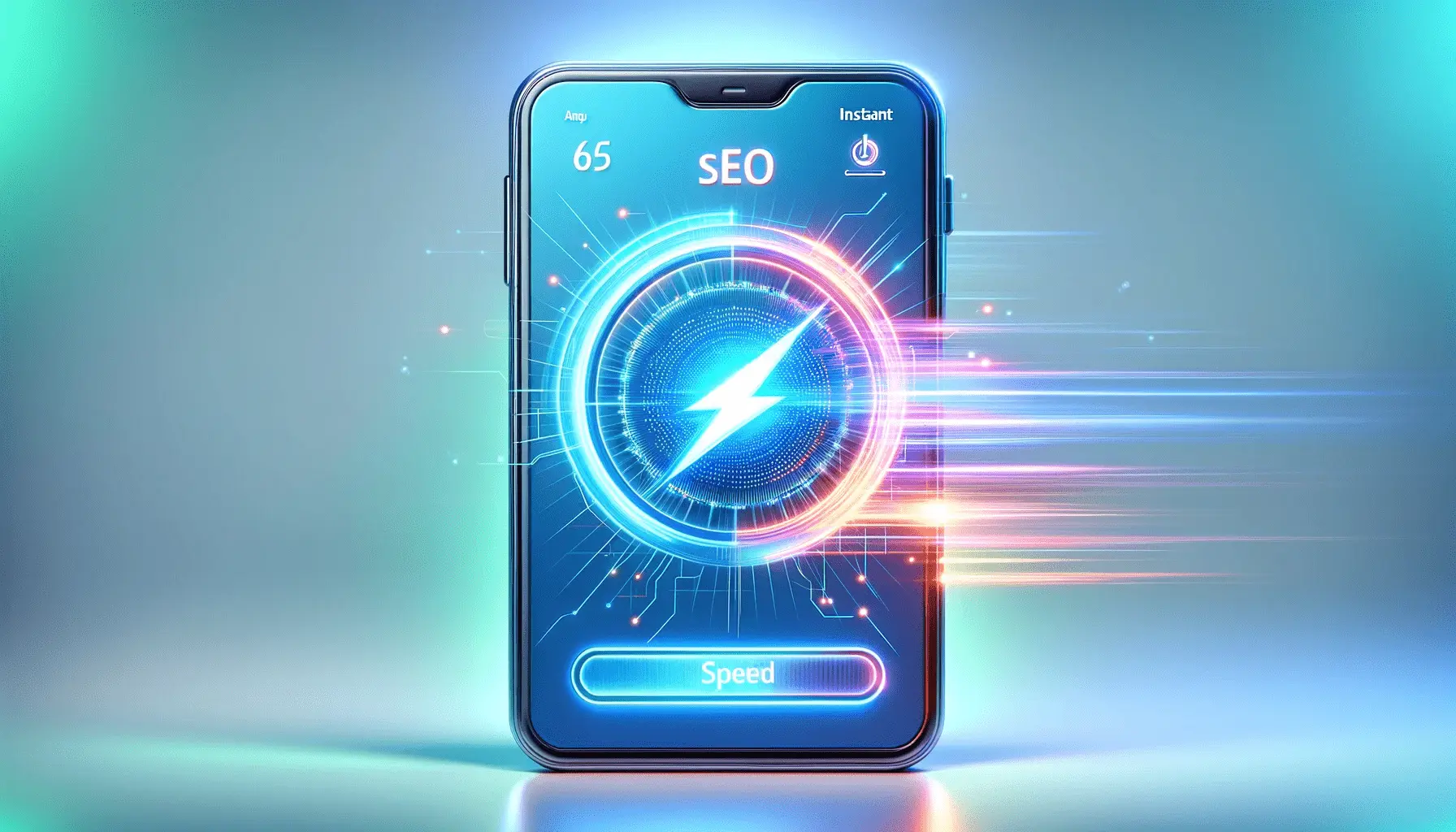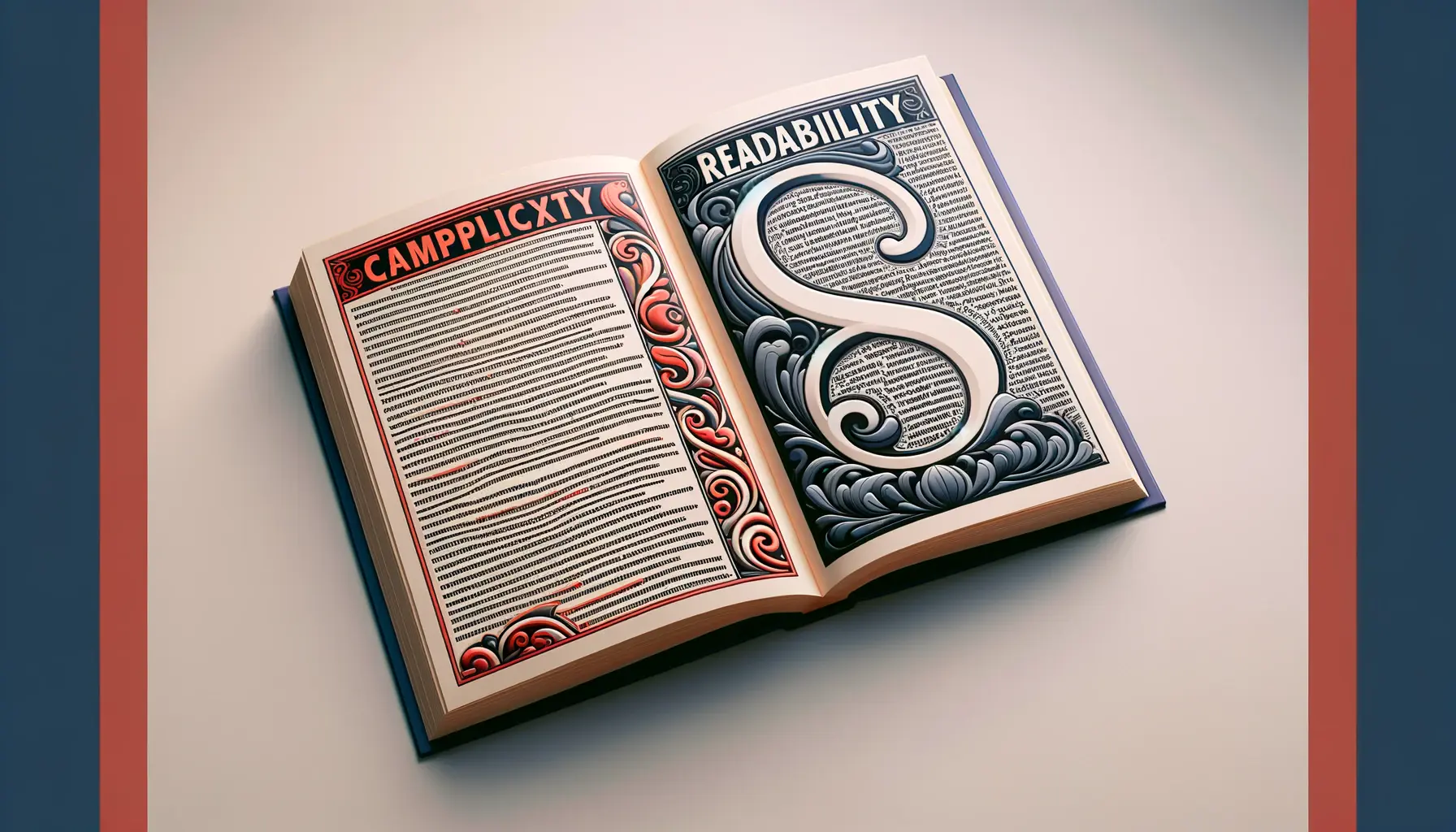Typography, often seen as merely an aesthetic choice, holds a much deeper significance in the digital realm, especially concerning website loading times and search engine optimization (SEO).
The art of selecting and arranging typefaces is not just about making a website look good; it directly influences how quickly a site loads and how well it ranks on search engines.
This intricate relationship between typography and digital performance is crucial for web designers, developers, and content creators aiming to optimize their online presence.
At its core, typography affects the user experience and accessibility, factors that search engines like Google prioritize when determining a website’s ranking.
The choice of font, size, spacing, and color can significantly impact how easily users can read and interact with content, thereby affecting engagement rates, bounce rates, and ultimately, SEO performance.
Understanding the nuances of typography’s impact on loading times and SEO is essential for creating efficient, user-friendly, and search-engine-optimized websites.
- Understanding Typography’s Role in Web Performance
- Optimizing Typography for Enhanced SEO
- Typography’s Impact on User Experience and Engagement
- Case Studies: Typography’s Real-World SEO Impact
- Typography and Mobile Optimization
- Integrating Typography with Overall SEO Strategy
- Future Trends in Typography and SEO
- Concluding Insights on Typography’s Influence on SEO and Loading Times
- FAQs on Typography’s Impact on SEO and Loading Times
Understanding Typography’s Role in Web Performance
The selection of typefaces and their implementation on a website can have a profound effect on its loading speed.
Custom fonts, for instance, can add to the aesthetic appeal of a site but may also increase loading times due to the additional HTTP requests required to fetch them from external servers.
This delay, albeit slight, can negatively impact user experience and SEO, as search engines penalize slow-loading websites in their rankings.
Moreover, the complexity of typography extends to its influence on readability and accessibility.
The right font choice enhances the legibility of web content, making it easier for users to consume information.
Enhanced readability leads to longer dwell times and lower bounce rates, signals that search engines interpret as indicators of a site’s value, thereby improving its SEO ranking.
Thus, typography is a critical element in the web design process, balancing aesthetic appeal with functional performance.
Font Loading Strategies and SEO
Implementing efficient font loading strategies is paramount in minimizing the impact of typography on page loading times.
Techniques such as using system fonts, which are pre-installed on most devices, or incorporating font-display swap in CSS, can significantly reduce the time it takes for text to become visible to users.
These methods ensure that text is rendered promptly, improving the user experience and contributing positively to SEO by adhering to search engines’ speed requirements.
Another aspect to consider is the use of font subsets, which involve including only the characters that are actually used on the website.
This approach reduces the size of font files, further accelerating page loading times.
By optimizing how fonts are loaded and displayed, websites can achieve a balance between design and performance, enhancing their SEO potential without compromising on visual quality.
Typography is not just a design element but a crucial factor in web performance and SEO, impacting loading times, user experience, and search engine rankings.
Optimizing Typography for Enhanced SEO
Optimizing typography for SEO involves more than just choosing attractive fonts.
It requires a strategic approach that considers various factors affecting how a website is indexed and ranked by search engines.
By focusing on typography’s role in SEO, webmasters can significantly improve their site’s visibility and user engagement.
Here are key strategies for optimizing typography to boost SEO performance:
Choosing SEO-Friendly Fonts
Selecting the right fonts is crucial for both loading speed and readability, which are essential for SEO.
SEO-friendly fonts are those that combine aesthetic appeal with functionality, ensuring that content is not only engaging but also accessible to all users.
Here are some considerations for choosing SEO-friendly fonts:
- Web-Safe Fonts: Opt for web-safe fonts that are widely supported across different browsers and devices. These fonts ensure consistency in how text is displayed, improving the user experience and SEO.
- Font Size and Legibility: Ensure that the font size is appropriate for readability on various devices. Larger font sizes improve legibility, especially on mobile devices, contributing to better SEO rankings.
- Font Loading Efficiency: Choose fonts that do not significantly impact page loading times. Fonts that are optimized for the web and have smaller file sizes are preferable for maintaining fast loading speeds.
Improving Typography for Mobile SEO
With the increasing prevalence of mobile browsing, optimizing typography for mobile devices is essential for SEO.
Mobile-friendly typography not only enhances readability on smaller screens but also contributes to faster loading times, a critical factor in mobile SEO.
Here are strategies to optimize typography for mobile SEO:
- Responsive Font Sizes: Use responsive design techniques to adjust font sizes based on the device’s screen size, ensuring text remains legible on mobile devices.
- Minimalistic Font Choices: Limit the number of font variations used on mobile versions of the site to reduce loading times and improve performance.
- Contrast and Color: Ensure high contrast between text and background colors to improve readability on mobile screens, positively affecting user engagement and SEO.
Utilizing Headings and Semantic Markup
Proper use of headings and semantic markup plays a significant role in SEO, helping search engines understand the structure and content of a webpage.
Here’s how to effectively use typography in headings for SEO:
- Clear Hierarchy: Use headings (H1, H2, H3, etc.) to establish a clear content hierarchy, making it easier for search engines to crawl and index the site.
- Keyword-Rich Headings: Incorporate relevant keywords into headings to signal content relevance to search engines, improving the site’s SEO performance.
- Accessibility: Ensure headings are designed with accessibility in mind, using fonts and sizes that are easy to read for all users, including those with disabilities.
By strategically optimizing typography, websites can enhance their SEO performance, improve user experience, and achieve higher rankings in search engine results.
Typography’s Impact on User Experience and Engagement
The influence of typography on user experience (UX) and engagement is profound and multifaceted.
Effective typography not only captures the attention of visitors but also keeps them engaged, directly impacting a website’s bounce rate, dwell time, and ultimately, its SEO rankings.
Here’s how typography affects UX and engagement:
Enhancing Readability and Accessibility
Typography that prioritizes readability and accessibility significantly improves the user experience.
When visitors can easily read and understand the content, they are more likely to stay longer on the site, explore more pages, and engage with the content.
This positive interaction signals to search engines that the website is valuable and relevant, boosting its SEO rankings.
Key aspects include:
- Choosing fonts that are easy to read across devices and browsers.
- Implementing adequate line spacing and font size to enhance text readability.
- Ensuring high contrast between text and background colors to aid visibility.
Creating Emotional Connections Through Typography
Typography has the power to evoke emotions and set the tone for a website’s content.
The choice of typeface can convey professionalism, friendliness, or creativity, influencing how users perceive the brand and interact with the website.
A strong emotional connection can increase user engagement, reduce bounce rates, and encourage social sharing, all of which are beneficial for SEO.
Strategies include:
- Selecting typefaces that align with the brand’s personality and message.
- Using typography to highlight key information and guide users through the content.
- Employing unique fonts sparingly to add character without compromising readability.
Typography and Navigation
Well-designed typography enhances website navigation, making it easier for users to find the information they seek.
Clear and consistent typographic cues, such as button labels, menu items, and call-to-action (CTA) texts, guide users through the site, improving the overall UX.
This seamless navigation contributes to longer dwell times and higher engagement rates, positively affecting SEO.
Effective navigation typography involves:
- Using distinct and legible fonts for navigation elements to stand out.
- Ensuring consistency in typography across all navigation components.
- Highlighting important navigation elements with size, color, or style variations.
A well-thought-out typographic strategy enhances the user experience by improving readability, creating emotional connections, and facilitating easy navigation, leading to increased user engagement and better SEO outcomes.
Case Studies: Typography’s Real-World SEO Impact
Exploring real-world examples provides valuable insights into how typography can influence SEO and user engagement.
These case studies highlight the tangible benefits of strategic typographic choices, demonstrating their potential to enhance website performance and search engine rankings.
Improving Load Times with Font Optimization
A major e-commerce platform faced challenges with slow loading times, negatively impacting its bounce rates and SEO rankings.
By analyzing their typography usage, they identified that the variety of custom fonts and their sizes were significantly contributing to the sluggish performance.
The solution involved:
- Switching to optimized web-safe fonts that maintained the brand’s aesthetic without the heavy load.
- Implementing font-display swap to ensure text remained visible during font loading, improving perceived load times.
- Reducing the number of font variations used across the site to minimize HTTP requests.
The result was a notable improvement in page loading times, leading to a decrease in bounce rates and an increase in user engagement and SEO rankings.
Enhancing Readability for Higher Engagement
An online magazine observed that despite high-quality content, user engagement metrics such as time on page and page views per session were lower than expected.
The issue was traced back to poor typography choices that affected readability, especially on mobile devices.
The magazine took steps to address this by:
- Adopting a more legible font family that was easier to read on various screen sizes.
- Adjusting font sizes and line heights based on device type to improve text readability.
- Implementing better contrast between text and background colors to enhance visibility.
These changes led to a significant increase in user engagement metrics, demonstrating the direct impact of typography on content consumption and SEO performance.
Boosting SEO with Strategic Heading Use
A B2B service provider struggled to improve its organic search rankings for key service pages.
An audit revealed that the site’s heading structure was inconsistent and under-optimized for SEO.
By restructuring their content with a clear hierarchy and incorporating relevant keywords into headings, they achieved:
- Improved content organization, making it easier for search engines to understand and index their pages.
- Enhanced user experience, as visitors could navigate the content more effectively.
- Higher rankings for targeted keywords, leading to increased organic traffic and conversions.
These case studies underscore the importance of typography in web design and SEO strategy, showing that thoughtful typographic choices can lead to improved website performance, user satisfaction, and search engine visibility.
Typography and Mobile Optimization
In the age of smartphones and tablets, mobile optimization has become a cornerstone of web design and SEO strategy.
Typography plays a crucial role in ensuring that websites are not only accessible but also provide an optimal viewing experience on mobile devices.
The adaptability of text to various screen sizes directly impacts user engagement, bounce rates, and search engine rankings.
Responsive Typography Techniques
Responsive typography involves adjusting type settings based on the device’s screen size and resolution to ensure text is always legible and appealing.
Key techniques include:
- Using relative units like percentages or viewport widths for font sizes to ensure scalability.
- Adjusting line heights and letter spacing to improve readability on smaller screens.
- Employing media queries to apply different typographic styles based on device characteristics.
Implementing these techniques ensures that regardless of the device, users have a seamless and enjoyable reading experience, contributing positively to SEO outcomes.
Impact of Mobile Typography on SEO
Search engines like Google prioritize mobile-friendly websites in their rankings, making mobile optimization an essential aspect of SEO.
Typography, by affecting load times and user experience on mobile devices, plays a significant role in this optimization process.
Considerations for mobile typography that positively impact SEO include:
- Minimalistic Font Choices: Choosing simple, web-safe fonts that load quickly and look good on small screens enhances mobile performance and SEO.
- Legibility Over Style: Prioritizing readability and legibility over stylistic font choices ensures that content is accessible to all users, aligning with SEO best practices for mobile.
- Contrast and Color: Ensuring sufficient contrast between text and background colors on mobile devices improves readability, reducing bounce rates and improving SEO performance.
Case Study: Mobile Typography Redesign
A lifestyle blog noticed a significant drop in mobile traffic and engagement metrics.
Analysis revealed that the site’s typography was not optimized for mobile devices, leading to poor readability and user experience.
The blog underwent a mobile typography redesign, focusing on:
- Implementing responsive font sizes and line heights for better readability across devices.
- Choosing a more legible font family optimized for mobile screens.
- Enhancing contrast between text and background to ensure content is easily readable in various lighting conditions.
The redesign led to a marked improvement in mobile user engagement, lower bounce rates, and higher search engine rankings for mobile searches, highlighting the critical role of typography in mobile SEO.
Optimizing typography for mobile devices is not just about enhancing aesthetics but also about improving site performance and SEO, ensuring content is accessible and engaging for all users, regardless of their device.
Integrating Typography with Overall SEO Strategy
Integrating typography into an overall SEO strategy is essential for creating a cohesive and effective online presence.
Typography should not be an afterthought but a key component of the design process, directly influencing how content is perceived and interacted with by users.
A well-planned typographic strategy can enhance readability, user experience, and ultimately, SEO performance.
Keyword Optimization in Typography
Typography can play a significant role in keyword optimization, a core aspect of SEO.
By emphasizing important keywords through typographic elements such as headings, bold text, and italics, websites can signal to search engines the relevance and focus of their content.
However, it’s crucial to balance keyword optimization with readability and user experience.
Strategies include:
- Using headings to structure content and include main keywords naturally.
- Highlighting key phrases or terms within paragraphs to draw user attention and emphasize relevance to search queries.
- Ensuring that the use of typographic emphasis does not detract from the overall readability of the text.
Typography and Site Structure
The organization of content through typography affects both user experience and how search engines index and understand a website.
A clear, logical structure facilitated by consistent use of headings, bullet points, and numbered lists can improve the navigability of a site, encouraging users to spend more time engaging with the content.
This positive user behavior signals to search engines the quality and relevance of the site, benefiting SEO.
Effective site structure through typography involves:
- Consistently using heading levels to define sections and subsections of content.
- Employing lists to break down information into digestible, easy-to-read formats.
- Using typographic cues to guide users through the content, improving the overall flow and readability of the site.
Enhancing User Engagement Through Typography
Typography directly impacts user engagement by affecting how content is consumed.
Engaging, readable content encourages users to interact with a website more deeply, whether through reading longer articles, exploring additional pages, or sharing content on social media.
These engagement metrics are valuable SEO signals, indicating to search engines the value and relevance of a site.
To enhance user engagement through typography, consider:
- Choosing fonts and typographic styles that reflect the brand’s identity and appeal to the target audience.
- Using typography to create visually appealing content layouts that encourage exploration and interaction.
- Implementing call-to-action (CTA) buttons with clear, compelling typography to drive conversions and further engagement.
By thoughtfully integrating typography with your overall SEO strategy, you can create a more engaging, accessible, and effective website that not only appeals to users but also performs well in search engine rankings.
Future Trends in Typography and SEO
The digital landscape is continually evolving, and with it, the trends in typography and SEO.
As technology advances and user preferences change, the way we use typography to enhance SEO and user experience must also adapt.
Staying ahead of these trends is crucial for web designers, content creators, and SEO specialists aiming to maintain and improve their online presence.
Adaptive Typography
One emerging trend is adaptive typography, which goes beyond responsive design to offer a more personalized reading experience.
This involves typography that adjusts not just to the device or screen size but also to user preferences and contexts, such as ambient light conditions or the user’s preferred reading settings.
Adaptive typography aims to optimize readability and engagement for each individual user, potentially improving SEO by enhancing user satisfaction and interaction rates.
Variable Fonts
Variable fonts are gaining popularity due to their flexibility and efficiency.
A single variable font file can replace multiple font files by allowing a wide range of style variations (weight, width, etc.) within a single font.
This can significantly reduce file sizes and loading times, improving website performance and SEO.
Additionally, variable fonts offer creative opportunities for dynamic, context-aware typography in web design.
Accessibility and Inclusivity
As awareness of the importance of web accessibility grows, typography’s role in creating inclusive digital experiences becomes increasingly critical.
Future trends will likely emphasize typography that enhances accessibility for users with disabilities, including dyslexia-friendly fonts and designs that comply with WCAG guidelines.
Improving accessibility not only broadens a website’s audience but also aligns with search engines’ focus on user experience, positively impacting SEO.
AI and Machine Learning in Typography
Advancements in AI and machine learning are set to revolutionize typography in web design and SEO.
These technologies can help automate and optimize typographic choices, analyzing user data to select fonts, sizes, and layouts that maximize readability and engagement.
AI-driven typography could lead to more dynamic, personalized web experiences, improving SEO by catering to the specific preferences and behaviors of users.
Staying informed about the latest trends in typography and SEO is essential for anyone involved in web design and digital marketing. By embracing adaptive typography, variable fonts, accessibility, and AI, websites can enhance their user experience, meet evolving user expectations, and maintain competitive search engine rankings.
Concluding Insights on Typography’s Influence on SEO and Loading Times
The exploration of typography’s impact on SEO and website loading times reveals a complex interplay between design aesthetics and technical performance.
As we’ve navigated through the nuances of font selection, optimization strategies, and emerging trends, it’s clear that typography is a powerful tool in the digital marketer’s arsenal.
Not only does it shape the user’s visual and emotional experience, but it also plays a pivotal role in search engine rankings and site efficiency.
Key Takeaways
Our journey through the realms of typography and SEO has uncovered several key insights:
- Typography affects website loading times through font choice, file sizes, and rendering methods, directly influencing SEO performance.
- Optimizing typography for readability and user engagement enhances SEO by improving user experience metrics such as dwell time and bounce rates.
- Emerging trends like adaptive typography and variable fonts offer new opportunities to balance design flexibility with performance optimization.
Strategic Typography for Future-Proof SEO
As we look to the future, integrating typography with SEO strategy becomes increasingly important.
To stay ahead, web designers and SEO specialists must:
- Embrace adaptive and responsive typography to meet the diverse needs of a global, mobile-first audience.
- Leverage advancements in technology, such as AI and variable fonts, to optimize typography for both user experience and search engine visibility.
- Prioritize accessibility and inclusivity in typographic design to ensure content is universally readable and engaging.
In conclusion, the impact of typography on loading times and SEO is undeniable.
By carefully selecting and optimizing typography, websites can achieve faster loading times, better search engine rankings, and a superior user experience.
As digital landscapes evolve, so too will the strategies for integrating typography with SEO, offering exciting opportunities for innovation and improvement in web design and online marketing.
Quality web design is key for a great website! Check out our service page to partner with an expert web design agency.
FAQs on Typography’s Impact on SEO and Loading Times
Explore common questions about how typography influences website performance and search engine optimization.
Yes, larger font files can significantly slow down webpage loading times, negatively affecting user experience and SEO performance.
Fonts impact SEO by potentially increasing bounce rates due to poor user experience, which search engines like Google use as a ranking signal.
Yes, responsive typography ensures content is legible on any device, a critical factor for both SEO and user engagement.
Using large, ornate fonts can increase page load times, which may frustrate users and negatively impact SEO.
The method of delivering fonts, such as using efficient web formats, can significantly impact page load times and SEO.
Typography choices, including font family, can make or break your SEO ranking by affecting loading speed, accessibility, and user engagement.
Optimize fonts by choosing web-safe or optimized fonts, limiting font variations, and ensuring fonts do not hinder page loading speed.
Web-safe fonts are widely supported and can ensure consistent display across devices and browsers, contributing to better SEO.











